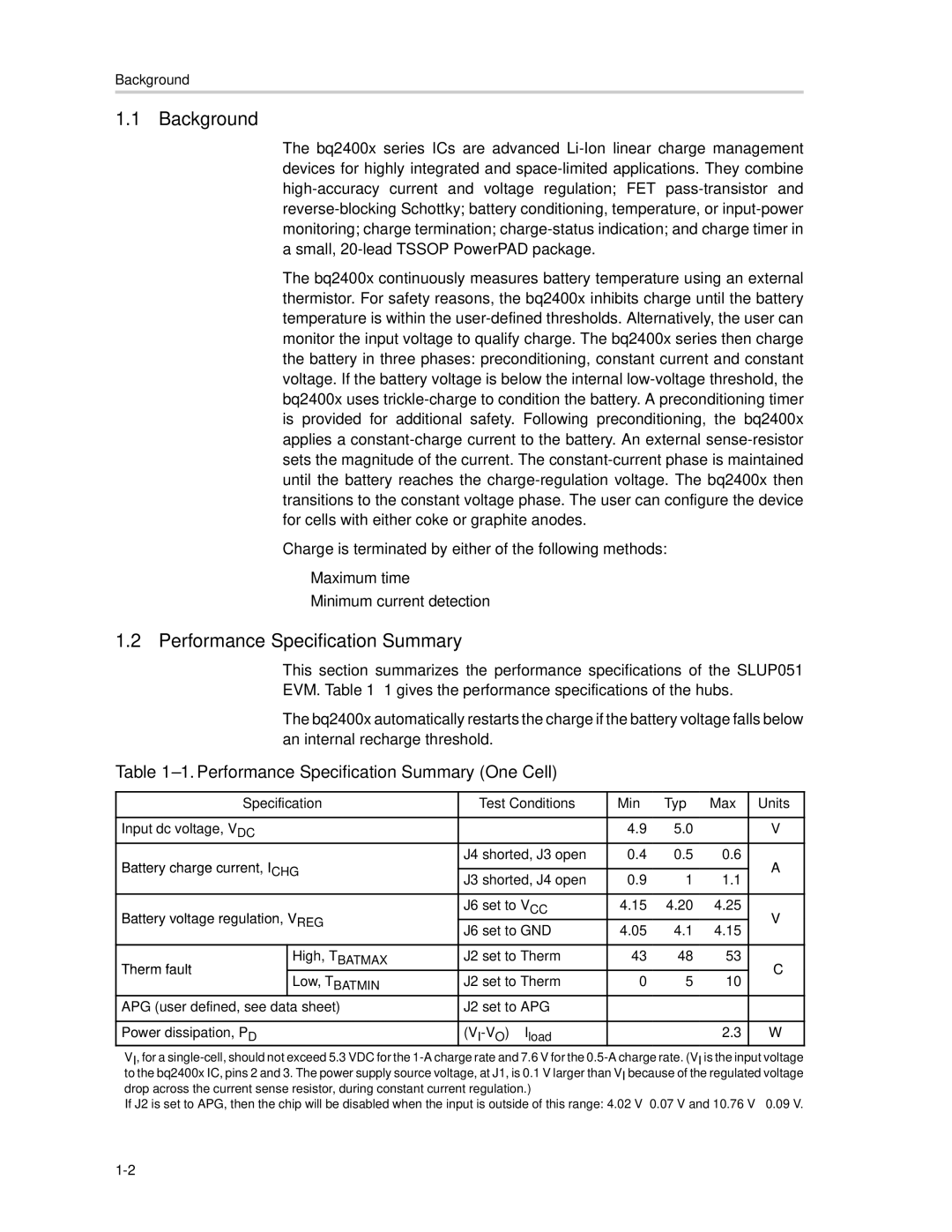SLUU083A specifications
Texas Instruments SLUU083A, technically known as the "Application Report: PFC Design With TL497," is a seminal document that provides comprehensive insights into the design and implementation of power factor correction (PFC) circuits using the TL497 PWM controller. This application report is crucial for engineers focused on enhancing power efficiency in various applications, particularly in consumer electronics and industrial equipment.One of the main features of the SLUU083A report is its detailed exploration of power factor correction, which helps in reducing energy consumption and minimizing the impact of harmonic distortion on electrical systems. The document outlines PFC methodologies that comply with international standards and regulatory requirements, ensuring that designers can create products that meet strict energy efficiency regulations.
The report introduces the TL497 as a versatile PWM controller that plays a pivotal role in managing power conversion processes. This controller offers features like a wide input voltage range, making it suitable for various applications from 85V AC to 265V AC. It also incorporates a high degree of integration, which simplifies designs and minimizes the size of PFC circuits.
The application report covers technologies such as continuous conduction mode (CCM) and discontinuous conduction mode (DCM), showcasing the advantages and trade-offs of each mode. Using CCM enhances efficiency under heavy loads, whereas DCM results in reduced power losses at light loads, presenting designers with options tailored to their specific requirements.
Another noteworthy characteristic of the SLUU083A report is its emphasis on component selection and layout guidelines that optimize performance and reliability. The report provides helpful calculations and design examples, illustrating how to achieve a desired output voltage and minimize losses.
In conclusion, Texas Instruments SLUU083A serves as an essential resource for engineers designing PFC circuits with the TL497 PWM controller. Its emphasis on efficiency, regulatory compliance, and practical design considerations makes it a valuable reference in the field of power management. The integration of innovative technologies and robust guidelines ensures that designers can create systems that not only comply with regulations but also provide reliable and effective power conversion. This combination of features and characteristics establishes SLUU083A as a go-to document for advancing power efficiency solutions in diverse applications.
